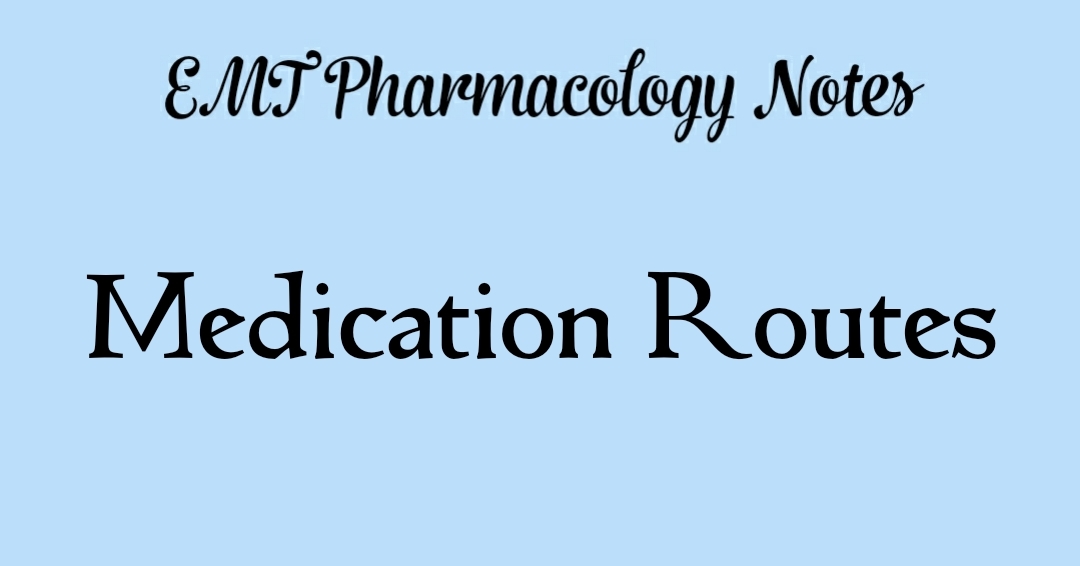
Medication routes… how is it given? Just as you would take a different route to go somewhere, medications take different routes to get into the body. Different routes have different absorption rates- some get into the bloodstream faster than others; oral is slowest.
Per Rectum (fast absorption) administered rectally; common medications for children
Ingestion (slow absorption) is taken orally, but if the patient’s stomach is upset this will affect absorption
Intravenous (immediate) goes directly into their vein- not all medications can be administered this way
Intraosseous (immediate) is administered in their bone; it is very painful and normally used for unconscious patients
Subcutaneous (slow) is administered just under the skin; the effects last longer due to slower absorption
Intramuscular (moderate) administers medication directly into the muscle
Inhalation (rapid) are inhaled to treat lung issues or for rapid absorption
Sublingual (rapid) is given under their tongue and protects medications from stomach acid
Transcutaneous (slow) is through the skin- be careful not to accidentally touch these medications with your bare skin; an example would be a patient using a fentanyl patch
Intranasal (rapid) is inhaled through the patient’s nose
Reference:
Emergency Care and Transportation of the Sick and Injured, Tenth Edition- Section 2, Chapter 7 Published by Jones & Bartlett Learning www.jblearning.com. Copyright 2011 by the American Academy of Orthopaedic Surgeons
